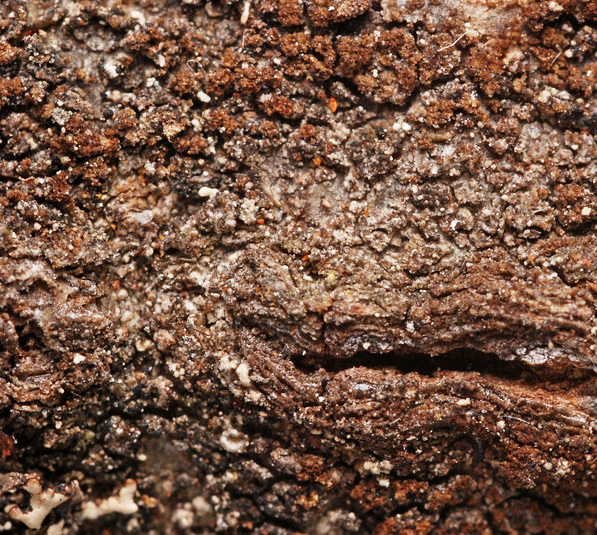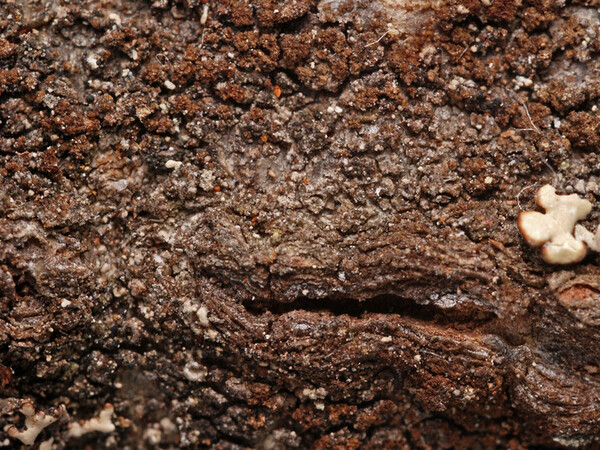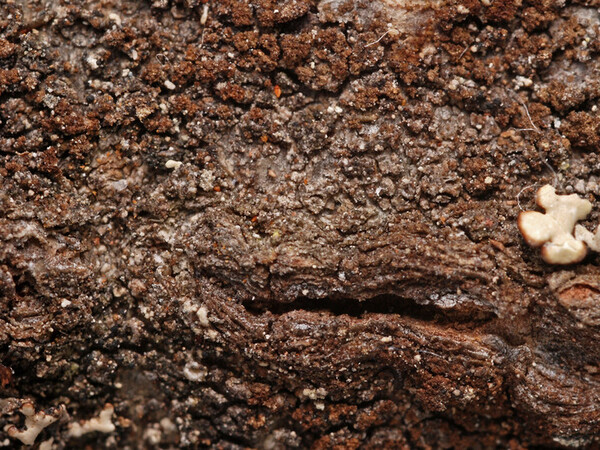Placynthiella dasaea (Stirt.) Tønsberg
Sommerfeltia 14: 271, 1992. Basionym: Lecidea dasaea Stirt. - Scottish Natur., 5: 219, 1880.
Synonyms:
Distribution: N - Ven (Thor & Nascimbene 2007), TAA (UPS-L-166869), Lomb (UPS-L-166868).
Description: Thallus crustose, episubstratic, consisting of minutely coralloid goniocysts, pale to dark brown or greenish brown, continuous, cracked or indistinctly areolate, sorediate/blastidiate, forming rounded to irregular usually up to a few cm wide, occasionally to more than 10 cm wide patches, without a distinct prothallus. Areoles usually absent, or formed in very young thalli only, irregularly rounded, flattened to convex, up to 0.2 mm in diam. Soralia brown due to pigmentation of the external blastidia, or greenish in abraded parts, mostly discrete, at first rounded and convex, later confluent into a subleprose, thick, often cracked crust. Soredia/blastidia mostly farinose, 20-30 μm in diam., sometimes gathered into up to 45(-65) μm wide aggregates, the external ones enveloped by a distinct, brown fungal cover of more or less isodiametrical hyphae forming a pseudoparenchyma, the internal ones greenish, without such a cover. Apothecia very rare, biatorine, up to 0.3 mm across, with a brown disc and a slightly paler, thin proper margin. Proper exciple brown, pseudoparenchymatous; epithecium brown, C+ red; hymenium colourless or pale brown, I+ reddish brown; paraphyses strongly coherent, sparingly branched and anastomosing, the apical cells swollen, with a dark cap; hypothecium brown. Asci 8-spored, cylindrical-clavate, thin-walled, the apical dome mostly I-, Trapelia-type. Ascospores 1-celled, hyaline, ellipsoid, 9-11 x 4-5 μm. Photobiont chlorococcoid, forming regular, densely packed colonies of pairs/tetrads of algal cells, with the youngest daughter cells often closely attached to each other. Spot tests: thallus K-, C+ red, KC+ red, P- (reactions best seen in squash preparations), UV- or UV+ faintly whitish blue in poorly pigmented specimens. Chemistry: gyrophoric acid (major), lecanoric acid (traces). Note: on acid soil, lignum and bark in upland areas; probably more widespread in the Alps, but overlooked.
Growth form: Crustose
Substrata: lignum, soil, terricolous mosses, and plant debris
Photobiont: green algae other than Trentepohlia
Reproductive strategy: mainly asexual, by soredia, or soredia-like structures (e.g. blastidia)
Pioneer species
Commonnes-rarity: (info)
Alpine belt: rather rare
Subalpine belt: rather common
Oromediterranean belt: very rare
Montane belt: rather rare
Submediterranean belt: absent
Padanian area: absent
Humid submediterranean belt: absent
Humid mediterranean belt: absent
Dry mediterranean belt: absent
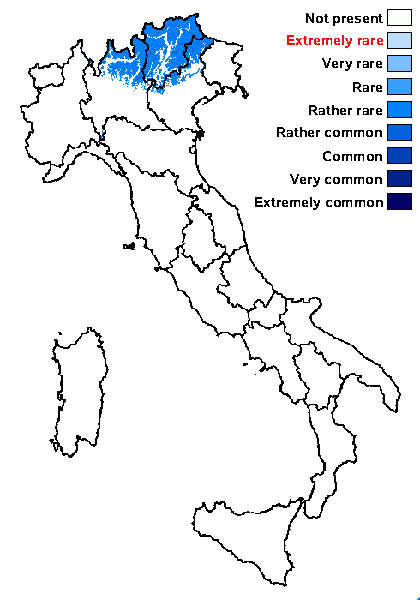
Predictive model


Felix Schumm - CC BY-SA 4.0
[ABL78684], Brazil, Santa Catarina, Rio Negrinho, Rio Preto, Fazenda
Velha, on farm on wood. 26°17'57'' S, 49°37'24'' W, 800 m. Leg. A.
Aptroot (no 78684), 31 March 2019, det. A. Aptroot 2019. - Thallus
crustose, areolate, sorediate, dark brown or greenish brown. Apothecia
up to 0.3 mm, disc brown. Chemistry: C+ red, UV- or faintly whitish
blue in less pigmented species. Gyrophoric acid, lecanoric acid (trace).
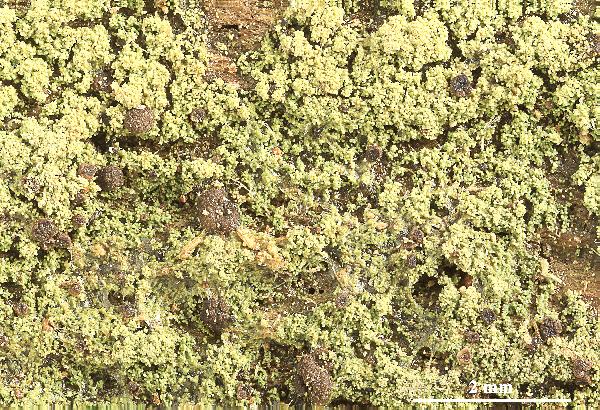

Felix Schumm - CC BY-SA 4.0
[ABL78684], Brazil, Santa Catarina, Rio Negrinho, Rio Preto, Fazenda
Velha, on farm on wood. 26°17'57'' S, 49°37'24'' W, 800 m. Leg. A.
Aptroot (no 78684), 31 March 2019, det. A. Aptroot 2019. - Thallus
crustose, areolate, sorediate, dark brown or greenish brown. Apothecia
up to 0.3 mm, disc brown. Chemistry: C+ red, UV- or faintly whitish
blue in less pigmented species. Gyrophoric acid, lecanoric acid (trace).
Growth form: Crustose
Substrata: lignum, soil, terricolous mosses, and plant debris
Photobiont: green algae other than Trentepohlia
Reproductive strategy: mainly asexual, by soredia, or soredia-like structures (e.g. blastidia)
Pioneer species
Commonnes-rarity: (info)
Alpine belt: rather rare
Subalpine belt: rather common
Oromediterranean belt: very rare
Montane belt: rather rare
Submediterranean belt: absent
Padanian area: absent
Humid submediterranean belt: absent
Humid mediterranean belt: absent
Dry mediterranean belt: absent

Predictive model


Felix Schumm - CC BY-SA 4.0
[ABL78684], Brazil, Santa Catarina, Rio Negrinho, Rio Preto, Fazenda Velha, on farm on wood. 26°17'57'' S, 49°37'24'' W, 800 m. Leg. A. Aptroot (no 78684), 31 March 2019, det. A. Aptroot 2019. - Thallus crustose, areolate, sorediate, dark brown or greenish brown. Apothecia up to 0.3 mm, disc brown. Chemistry: C+ red, UV- or faintly whitish blue in less pigmented species. Gyrophoric acid, lecanoric acid (trace).


 INDEX FUNGORUM
INDEX FUNGORUM
 GBIF
GBIF
 DOLICHENS
DOLICHENS
